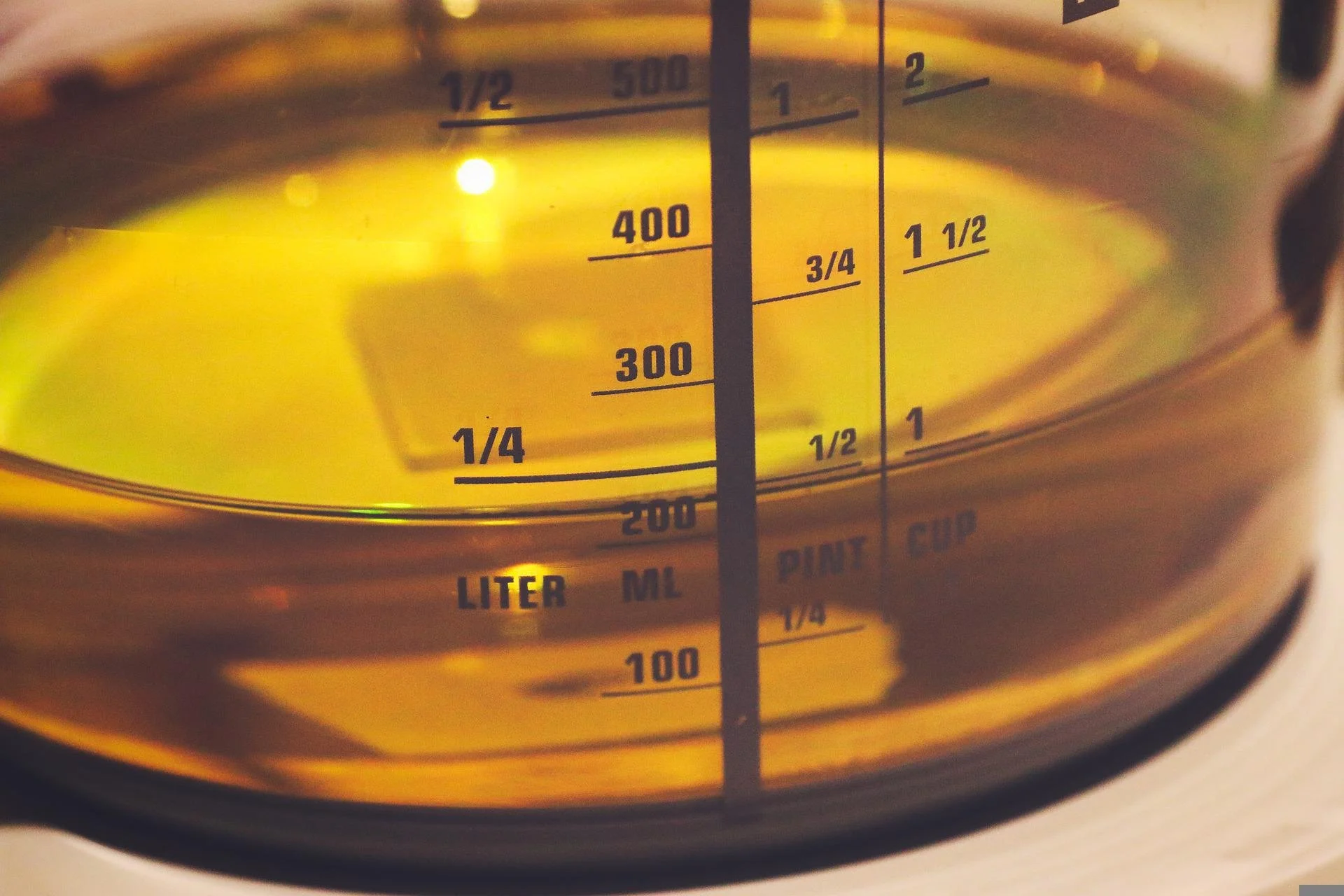Which Fat Is Best for Baking?
Real World Nutrition Episode 61: Which Fats and Oils to Bake With
Are There Healthier Fats to Bake With?
As mentioned in the previous post, baking season is coming. And, people often will look for a healthier fat to bake with.
I don’t do fruit puree or fat substitutes when it comes to baking. Instead, I use fat – actual fat. None of these make brownies with applesauce.
However, I have to make some comments about the fats we use in baking.
First, there is no such thing as low-fat fat. All fats are about 100-120calories per tablespoon and 100% fat. The difference in the total calorie would be from water (such as in butter) or a small amount of air.
Second, depending on the fat, they are plant- or animal-based. So, if someone is vegan, they may not want to use butter, or a vegetarian would not want to use lard. But because fat is plant-based does not mean it is healthier, as I noted in the post about coconut oil.
Solid fats like butter, shortening, and lard has their place and a role in baking. Because of the nature of these fats, their solid properties help with a nice layering or flaking of items such as pie crust and other pastries. But, again, this is something that oil will not replicate and cannot replicate.
In some cases, if there is a change in the type of fat, specifically from solid to liquid, it will change the texture of the end product (in baking) and may barely modify the nutrient profile.
Keep in mind, in this post, I am addressing baked products and not talking about cooking a couple of eggs or sautéing vegetables.
Butter
One tablespoon: 102 calories, 11.5 grams fat (7.3 grams saturated, 0.4 grams polyunsaturated, 3.0 grams monounsaturated)
Of course, this is animal based from dairy milk – and if someone has a dairy allergy, they may not be able to eat food made with butter. However, the small amount does not always affect people with a dairy allergy.
There is some water in butter, so the calories are slightly lower than other fats. But make sure to consider this as a healthier option. However, this is what I use most often in baking.
Shortening
One tablespoon: 115 calories, 12.8 grams fat (5.2 grams saturated, 1.4 grams polyunsaturated, 5.7 grams monounsaturated)
Shortening is usually plant-based and made with vegetable oils. Shortening is made with the process of hydrogenation. We want to minimize this type of fat – hydrogenated or partially hydrogenated oils (aka PHOs).
Shortening substitutes butter or lard since it is a solid fat. However, I do not consider this a healthier option, and I don’t recommend it. People tend to use it in pie crusts, which is acceptable for making and costs less than butter. So, if this is used, moderation or even rarely is preferred.
Lard
One tablespoon: 115 calories, 12.8 grams fat (5.0 grams saturated, 1.4 grams polyunsaturated, 5.8 grams monounsaturated)
While this is virtually the same profile as shortening, this is an animal product (pork-based). However, if someone eats animal products, I recommend this over the shortening. And it also has a healthier profile than butter, but certainly not the same taste.
I bring up this fat because some traditional New Mexico cookies (Biscochitos) are made with lard, and there is nothing wrong with that – in moderation.
Oils – Olive, Canola, Vegetable Oils (and other liquid fats)
Olive Oil: One tablespoon: 119 calories, 13.5 grams fat (1.9 grams saturated, 1.4 grams polyunsaturated, 9.8 grams monounsaturated)
Canola Oil: One tablespoon: 124 calories, 14 grams fat (1.0 grams saturated, 4.1 grams polyunsaturated, 8.2 grams monounsaturated)
Vegetable Oil: One tablespoon: 120 calories, 13.6 grams fat (1.0 grams saturated, 8.9 grams polyunsaturated, 3.1 grams monounsaturated)
Here the difference is minimal – and the most significant difference is flavor and cost. Olive oil is okay in baking, but some people may “taste” the olive part of the olive oil.
Canola oil is neutral, but some people don’t use it due to its cost.
Vegetable oil is neutral and tends to cost less than other oils. However, when baking, remember that the texture of the end product may come out differently.
I use more sugar, flour, and fat in the year’s final month than in the other 11 months combined. But I do like to bake. And, I keep in mind and remind others that this is one month of the year, not all year round. So chill on using butter or lard or shortening. It is okay – no reason to stock up on applesauce as a fat substitute.
Note: the nutrition information came from CalorieKing.com and used the “average of all brands” selection. Therefore, your specific fat profile might be slightly different.



